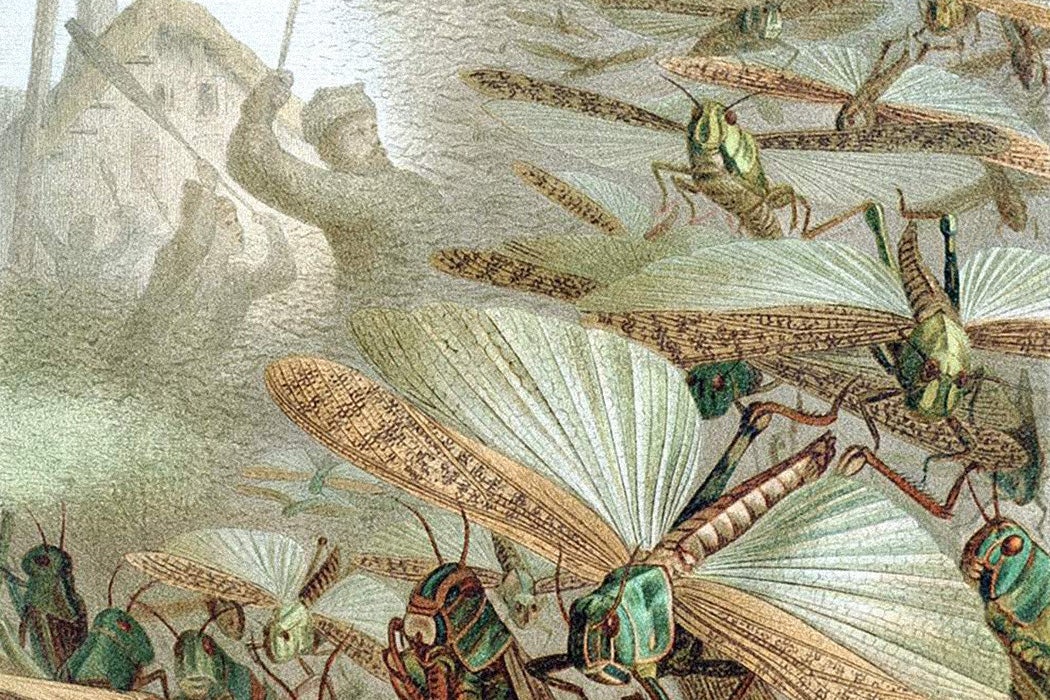On May 25, 1924, the front page of the Soviet magazine Kommunist featured an illustration of a giant locust standing on its hind legs, threatening the reader with a scythe. The scythe is emblazoned with a skull and crossbones; vultures hover ominously in the background. A single exclamatory phrase tops this cartoon: “The locusts!”
Though this cartoon may look like something pulled from a Soviet remake of A Bug’s Life, desert locusts are no laughing matter. In the Middle East especially, swarms of locusts were known to descend in massive, droning clouds to ravage entire fields. A plague of locusts could last for years at a time, causing food shortages and widespread unrest.
In the early 1920s, the Bolsheviks were looking for a way to gain control over neighboring countries and foreign allies. They saw these swarms as an opportunity to capitalize on a biblical fear. “The subjugation of nature was a key feature of communism,” writes historian Etienne Forestier-Peyrat. “Agricultural pest control became a major priority for the new regime.” The Bolsheviks framed locusts as “foreign” intruders—and emphasized that the Soviet border needed to be defended against their attacks.
Locusts “know no political borders” and migrate according to the weather patterns in various arid climates. The promise to “suppress the locust threat” was a handy tool for forging stronger relationships with the Soviet Union’s border republics (like Armenia, Georgia, and Azerbaijan). Internationally, the Soviets also used their anti-locust campaign “as an excuse to monitor other regions more closely,” writes Forestier-Peyrat.
In 1923, multiple anti-locust expeditions were dispatched to areas in South and Southwestern Azerbaijan, where locusts nested. Teams were also sent to Persia (modern-day Iran), to survey the border areas. “The campaign relied upon peasant forced work,” writes Forestier-Peyrat. “They were engaged in mechanical destruction of pods and young locusts, by different means. As the 1920s went on, they were increasingly supported by aeroplanes, used to spread poison and insecticides on contaminated areas.” At its peak, tens of thousands of peasants took part in this campaign. Once the pods started to hatch, the second phase of the campaign was initiated. According to Forestier-Peyrat, this phase “involved fighting and killing adult locusts in a context of general panic.”
Weekly Newsletter
And, Forestier-Peyrat continues, “Soviet authorities partially fostered this fear, in order to mobilise and unite the population around the state and Party.”
Today, locust swarms continue to bring starvation and devastation. As the world faces the COVID-19 pandemic, East Africa and the Middle East are also fighting off the worst invasion of desert locusts in decades. Since early 2020, billions of ravenous locusts have bulldozed pasturelands in “dark clouds the size of football fields and small cities.” With no propaganda campaign to bring attention to these swarms, this is one plague of which much of the world remains unaware.







